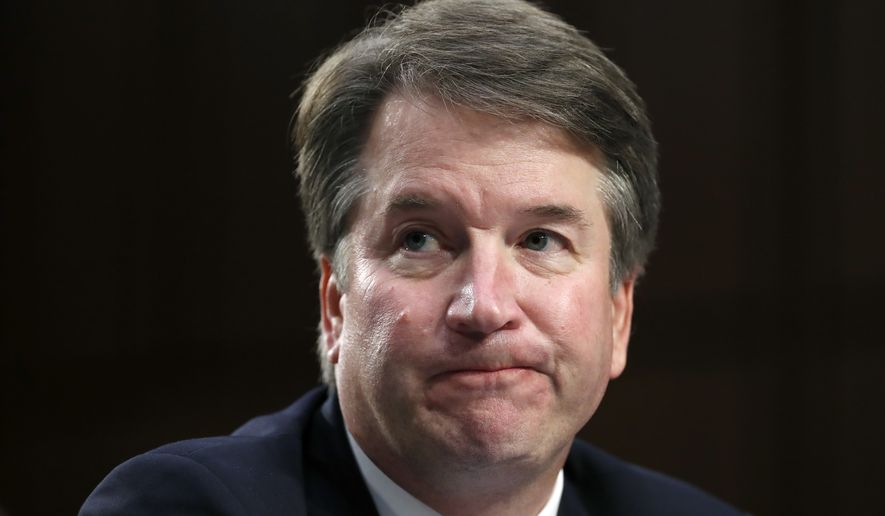A viral video falsely described as showing thousands of motorcyclists riding in support of Brett Kavanaugh, President Trump’s embattled nominee for the Supreme Court, has illustrated how politically-charged misinformation spreads wildly on social media in spite of efforts to curb the flow of so-called “fake news.”
Uploaded to Facebook by an account named “World against terrorism,” the video of a purported massive “Bikers for Trump” caravan was shared by roughly 114,000 users and viewed around 2.4 million times within fewer than 48 hours of being posted Monday evening, thanks in part to being amplified by legitimate groups including the Republican Party of Charlotte County, Florida.
“OUTSTANDING!” the account captioned the video. “Bikers for Trump on [their] way to Washington DC to Support the Kavanaugh Confirmation Hearing and Demand Sen. Feinsten [sic] to resign! This is Amazing! Thank you Bikers for Trump!
The video predates both Mr. Trump’s high court pick and his own presidency, however, and was actually filmed during a April 2016 protest in Paris, France, Twitter user Sarah Thompson noticed Tuesday.
The “World against terrorism” page was created hardly a week before sharing the video, Ms. Thompson noted, and subsequent reporting found that several of its recent posts linked to articles published by two websites in particular, weirdworldinfo.com and cukaminfo.com, each registered in Macedonia recently and rife with misleading or bogus content.
Both of the fake news sites liked by the Facebook page utilized the same account on Google’s advertising platform, AdSense, as a previously discovered network of similarly misleading sites registered in Macedonia, reported Media Matters, a watchdog group funded by liberal megadonor George Soros.
Less than two months until the November midterm elections, the demonstrated success in spreading bogus content supportive of Mr. Trump and his controversial Supreme Court choice raises questions concerning the degree to which Facebook has improved with respect to combatting the type of misinformation that first made “fake news” a household phrase during the 2016 U.S. presidential race.
Misleading articles resembling legitimate media reports flooded Facebook prior to Mr. Trump’s victory, causing confusion among the millions of Americans who say they use social media as a source for news — around 44 percent of the U.S. population, according to a 2016 survey conducted by Pew Research Center.
Facebook later partnered with Snopes, a fact-checking site established in 1995, and the distribution of bogus articles shared on the platform dropped afterwards by an average of 80 percent, the social networking company said earlier this year.
“Over the last year and half, we have been committed to fighting false news through a combination of technology and human review, including removing fake accounts, partnering with fact-checkers and promoting news literacy. This effort will never be finished and we have a lot more to do,” Facebook product manager Tess Lyons said in June.
Facebook more recently waded back into the “fake news” discussion after the company came under fire for allowing accounts associated with Alex Jones, the publisher of the controversial Infowars website widely accused of peddling right-wing conspiracy theories.
“We see Pages on both the left and the right pumping out what they consider opinion or analysis — but others call fake news. We believe banning these Pages would be contrary to the basic principles of free speech,” Facebook said prior to banning Mr. Jones last month.
Facebook did not immediately return an email seeking comment.
Mr. Trump appointed Judge Kavanaugh, a federal appeals judge, to replace retired Justice Anthony Kennedy in July. Multiple women have accused him of sexual misconduct dating back several decades, including a third woman Wednesday, Julie Swetnick.
• Andrew Blake can be reached at ablake@washingtontimes.com.




Please read our comment policy before commenting.